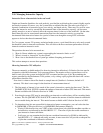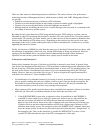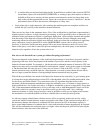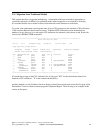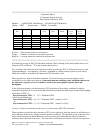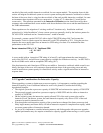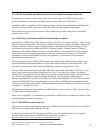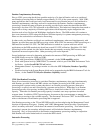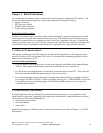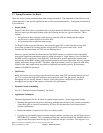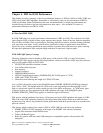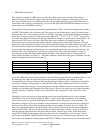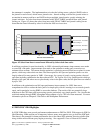
Similar to previous DSD performance behavior for interactive processing, the Interactive CPW rating of 0
allows for system administrative functions to be performed by a single interactive user. In practice, a
single interactive user will be able to perform necessary administrative functions without constraint. If
multiple interactive users are simultaneously active on the DSD, the Interactive CPW capacity will likely
be exceeded and the response times of those users may significantly lengthen. Even though the
Interactive CPW capacity may be temporarily exceeded and the interactive users experience increased
response times, other processing on the system will not be impacted. Interactive processing on the 270
and 820 DSD models can be tracked using the Management Central function of Operations Navigator.
Logical Partitioning on a Dedicated Server
With V5R1, iSeries logical partitioning is supported on both the Model 270 and Model 820. Just to be
clear, iSeries logical partitioning is different from running multiple Domino partitions (servers). It is not
necessary to use iSeries logical partitioning in order to be able to run multiple Domino servers on an
iSeries system. iSeries logical partitioning lets you run multiple independent servers, each with its own
processor, memory, and disk resources within a single symmetric multiprocessing iSeries. It also provides
special capabilities such as having multiple versions of OS/400, multiple versions of Domino, different
system names, languages, and time zone settings. For additional information on logical partitioning on the
iSeries please refer to Chapter 18. Logical Partitioning (LPAR) and LPAR web at:
http://www.ibm.com/eserver/iseries/lpar
.
When you use logical partitioning with a Dedicated Server, the DSD CPU processing guidelines are
pro-rated for each logical partition based on how you divide up the CPU capability. For example,
suppose you use iSeries logical partitioning to create two logical partitions, and specify that each logical
partition should receive 50% of the CPU resource. From a DSD perspective, each logical partition runs
independently from the other, so you will need to have Domino-based processing in each logical
partition in order for non-Domino work to be treated as complementary processing. Other DSD
processing requirements such as the 15% DB2 processing guidelines and the 15% non-Domino
processing guideline will be divided between the logical partitions based on how the CPU was allocated
to the logical partitions. In our example above with 50% of the CPU in each logical partition, the DB2
database guideline will be 7.5% CPU for each logical partition. Keep in mind that WRKSYSSTS and
other tools show utilization only for the logical partition they are running in; so in our example of a
partition that has been allocated 50% of the processor resource, a 7.5% system-wide load will be shown
as 15% within that logical partition. The non-Domino processing guideline would be divided in a similar
manner as the DB2 database guideline.
Running Linux on a Dedicated Server
As with other iSeries servers, to run Linux on a DSD it is necessary to use logical partitioning. Because
Linux is it’s own unique operating environment and is not part of OS/400, Linux needs to have its own
logical partition of system resources, separate from OS/400. The iSeries Hypervisor allows each partition
to operate independently. When using logical partitioning on iSeries, the first logical partition, the
primary partition, must be configured to run OS/400. For more information on running Linux on iSeries,
please refer to Chapter 13. iSeries Linux Performance and Linux for iSeries web site at:
Http://www.ibm.com/eserver/iseries/linux
.
Running Linux in a DSD logical partition will exhibit different performance characteristics than running
OS/400 in a DSD logical partition. As described in the section above, when running OS/400 in a DSD
logical partition, the DSD capacities such as the 15% DB2 processing guideline and the 15% non-Domino
processing guidelines are divided proportionately between the logical partitions based on how the
processor resources were allocated to the logical partitions. However, for Linux logical partitions, the
DSD guidelines are relaxed, and the Linux logical partition is able to use all of the resources allocated to
it outside the normal guidelines for DSD processing. This means that it is not necessary to have Domino
IBM i 6.1 Performance Capabilities Reference - January/April/October 2008
© Copyright IBM Corp. 2008 Chapter 2 - Server Performance Behavior 37



